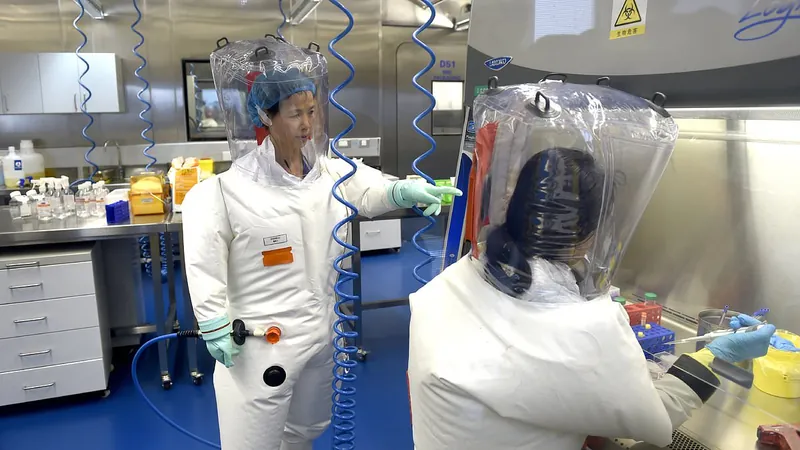
Scientists Sound Alarm: New Virus in China Just One Mutation Away from Pandemic
2025-06-05
Author: Kai
A new and potentially dangerous coronavirus, dubbed HKU5-CoV-2, has been discovered in China, raising fears it could trigger the next pandemic. Researchers warn that this virus is alarmingly close—just one small mutation—from being capable of infecting humans and causing widespread outbreaks.
The urgency around this discovery stems from its close relation to the MERS virus, known for its lethality, claiming the lives of approximately one-third of those it infects. Compounding concerns is the fact that HKU5 was initially identified in bats—this is particularly noteworthy given the past controversies surrounding the origins of COVID-19, with some speculating it may have leaked from a lab.
In a revealing study from Washington State University, scientists explored how HKU5 interacts with human cells using advanced lab techniques. Professor Michael Letko, a leading virologist, explained, 'Our findings are crucial; HKU5 viruses have been largely overlooked until now. However, our research indicates that a mere mutation might allow them to jump from bats to humans.'
The researchers focused on the virus’s spike protein, which is vital for its ability to bind to human ACE2 cells—found in the throat, mouth, and nose. In their experiments, they generated harmless 'pseudoviruses' that mimic HKU5, allowing them to test its infectivity on various cells.
Results were concerning: while bat cells lit up, indicating easy infection, human cells showed minimal response unless the virus carried mutations enhancing its interaction with ACE2 receptors. This raises the alarming possibility that if HKU5 spills over to an intermediate host, like mink or civets, it could evolve further before potentially infecting humans.
Adding to the intrigue, US intelligence agencies have investigated the potential of COVID-19 spilling from the Wuhan lab, where dangerous coronaviruses were being studied. Alternatively, others speculate it originated from a wet market environment, where various animals were housed in poor conditions.
This new research, published in Nature Communications, delves into a lesser-known group of coronaviruses, the merbecoviruses, which include HKU5 and the notorious MERS-CoV first identified in Saudi Arabia in 2012. MERS, notable for spreading from camels to humans, boasts a high fatality rate of around 34%.
Using sophisticated cryo-electron microscopy, scientists closely examined the virus's structure and found that while parts of the spike protein remained 'closed'—making infection challenging—this doesn’t rule out the potential for crossover into humans. Professor Letko urged vigilance, stating, 'These viruses are closely related to MERS, raising valid concerns about their potential to infect humans.'
In an alarming twist, reports have emerged indicating that a specific strain of HKU5, Lineage 2, can already bind to human ACE2 receptors, suggesting it could potentially infect human cells without needing additional mutations. Now, researchers are expanding their focus to examine the entire merbecovirus family, including multiple HKU5 variants, to fully grasp their potential risk to human health.
With Lineage 2 posing immediate danger, as it’s already equipped to enter human cells, this new study reveals that various HKU5 viruses may only be a few mutations away from a potential pandemic. The world watches closely as these scientific revelations unfold.


 Brasil (PT)
Brasil (PT)
 Canada (EN)
Canada (EN)
 Chile (ES)
Chile (ES)
 Česko (CS)
Česko (CS)
 대한민국 (KO)
대한민국 (KO)
 España (ES)
España (ES)
 France (FR)
France (FR)
 Hong Kong (EN)
Hong Kong (EN)
 Italia (IT)
Italia (IT)
 日本 (JA)
日本 (JA)
 Magyarország (HU)
Magyarország (HU)
 Norge (NO)
Norge (NO)
 Polska (PL)
Polska (PL)
 Schweiz (DE)
Schweiz (DE)
 Singapore (EN)
Singapore (EN)
 Sverige (SV)
Sverige (SV)
 Suomi (FI)
Suomi (FI)
 Türkiye (TR)
Türkiye (TR)
 الإمارات العربية المتحدة (AR)
الإمارات العربية المتحدة (AR)